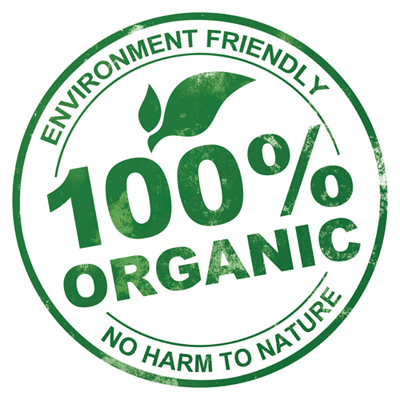
Package labeling has become the art of deception, the intentional use of language to confuse and deceive the consumer. This is particularly obvious as food companies seek to exploit the organic food movement, currently the fastest-growing segment of the food industry, but the cosmetic and pharmaceutical industries run close behind.
Consumers are rightfully concerned about what they put in and on their bodies. During the past 150 years, over 80,000 man-made chemicals have been introduced into the everyday environment, most without benefit of any testing whatsoever. Ever since Rachel Carson wrote her ground-breaking book “Silent Spring” in 1962 cautioning people about the effects of such chemicals, particularly pesticides, the organic movement has gained wider acceptance, and during the past decade the trend went mainstream. Food purveyors such as Safeway and Walmart are now among the largest retailers of organic products.
What constitutes “organic” is a matter of some debate, and as large corporations have acquired smaller organic producers the definition of “organic” has become contentious. Predictably, the smaller independent organic producers feel the corporations are wielding too much influence on the board that determines what is and what is not acceptably certified as “organic.”
But that brings us to the use of the word “natural” which appears on the packaging of many foods. I was amused to see the phrase “Uses Natural Beef” on a package of gourmet beef jerky; it left me wondering what “unnatural” beef would be? I don’t really want to know, to be honest.
The term “natural” implies wholesomeness, unprocessed, and pesticide free, and that’s why it appears on packaging so often. However, natural does not require upholding to any legal standard at all, it’s become a facile marketing tool to salve the legitimate concerns of consumers who want to feed themselves and their families safe and healthy food.
There are those who argue “caveat emptor” (let the buyer beware), that it’s the consumer’s responsibility to understand the meaning of language and specific words used on commercial products, even when words like “natural” are surrounded by illustrations of charming farms and glowing red apples. This argument ignores the great effort put into package design specifically created to manipulate and deceive the naive buyer.
We have not, as a nation, done very well educating our population in developing critical thinking skills, focusing education instead on wrote learning, passing tests for graduation, and preparing to find a job. Accordingly, people are easily confused and lack the skills to understand that “natural” neither means “organic” or safe to eat.
One of the most egregious examples of manipulation is the use of the term “evaporated cane juice.” This creative phrase appears on products such as “natural” fruit-flavored Popsicles. Evaporated cane juice is, of course, ordinary sugar, but using the word “sugar” might disincline buyers from purchasing so deceptive language is used instead.
In this atmosphere – deceptive packaging combined with uneducated consumers – the appropriate role of government is under discussion. Any government regulation is considered by some a sorry manifestation of the “nanny state,” while others feel the consumer needs protection from unfair practices. Ultimately, the solution needs to be a combination of education and regulation, with the emphasis on education. Unfortunately, funding for consumer education is in short supply at the moment, so regulation must proceed. Accordingly the burden should be placed upon companies who at present shamelessly exploit consumer ignorance.